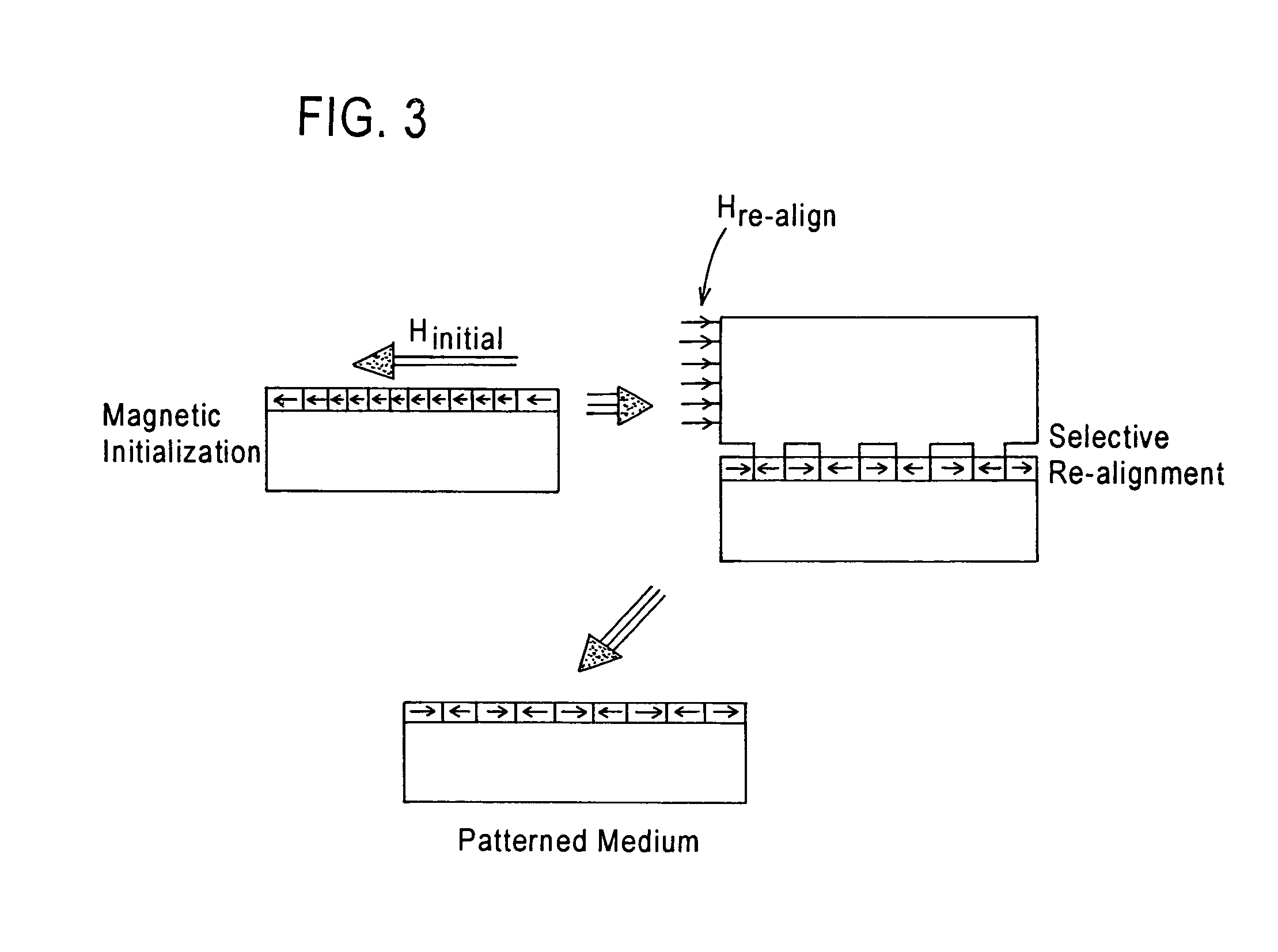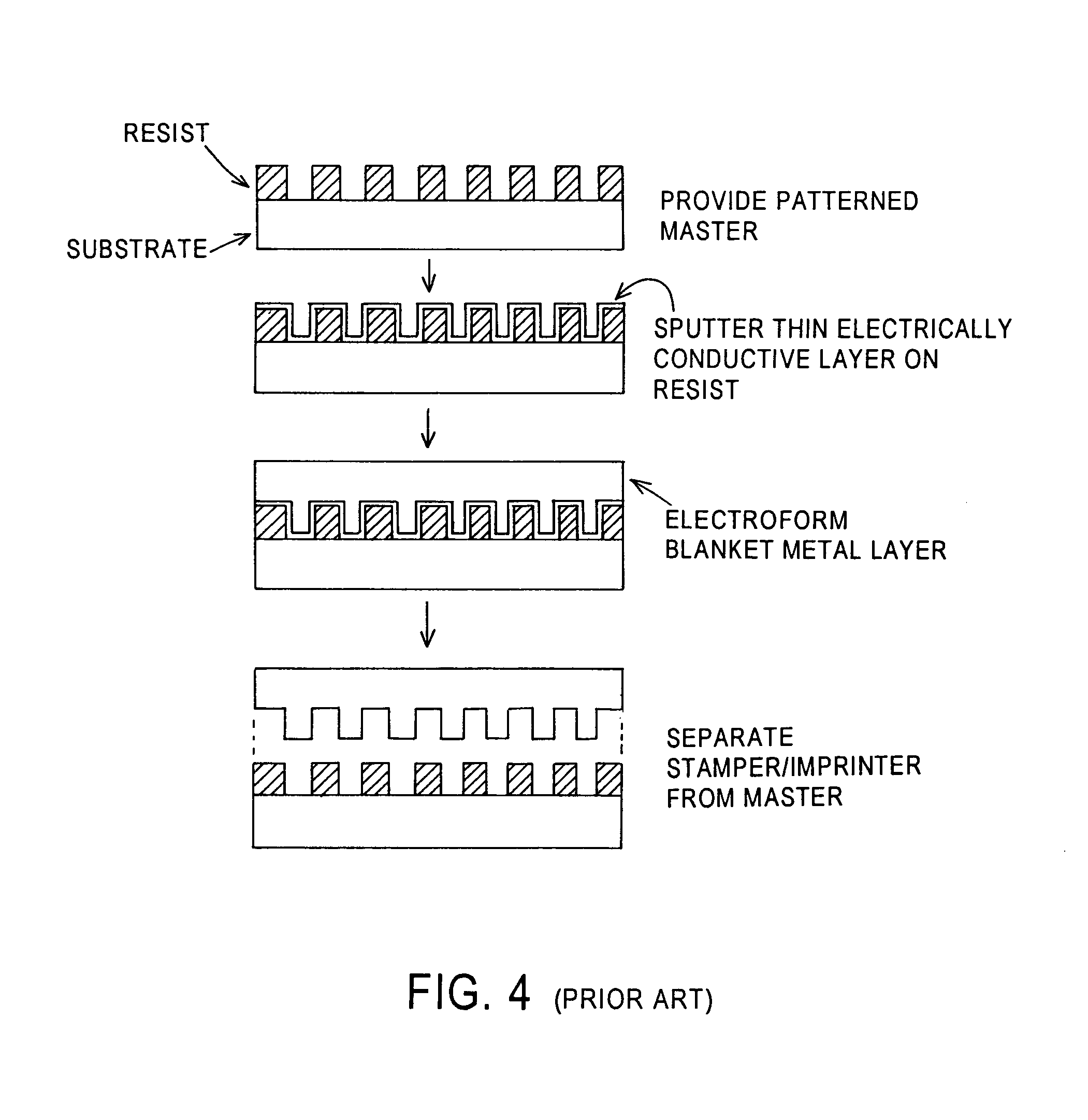Ultrasonic agitation-assisted development of resist layer of master stamper/imprinter
a technology of resist layer and ultrasonic agitation, which is applied in the direction of photomechanical equipment, instruments, cleaning using liquids, etc., can solve the problems of poor pattern replication fidelity, frequent surface staining of resist materials, and expensive servo-pattern writing equipment for writing servo patterns, etc., to improve image contrast and topographically patterned surface contrast.
- Summary
- Abstract
- Description
- Claims
- Application Information
AI Technical Summary
Benefits of technology
Problems solved by technology
Method used
Image
Examples
example
[0060]A series of test specimens were prepared, each comprising a layer of a positive e-beam resist (Nippon Zeon ZEP 520A-7) on a metal substrate. Each specimen was then exposed to a scanned e-beam for creation of a latent image therein, followed by development of the latent image. Development times of the latent images in conventional n-amyl acetate (Nippon Zeon ZEP 520) solvent without ultrasonic agitation ranged from about 4 to about 8 sec., whereas development times (at room temperature) in a developer solution comprising a solvent comprised of 50 vol. % isopropyl alcohol (IPA) and 50 vol. % de-ionized (DI) water with ultrasonic agitation supplied thereto at 40 kHz and 185 W power ranged from about 15 to about 30 min. Microscopic analysis of the developed specimens indicated that those developed at the longer development times provided by the ultrasonic agitation of the developer solution exhibited improved contrast between projecting and depressed features, relative to the spec...
PUM
| Property | Measurement | Unit |
|---|---|---|
| frequency | aaaaa | aaaaa |
| width | aaaaa | aaaaa |
| width | aaaaa | aaaaa |
Abstract
Description
Claims
Application Information
 Login to View More
Login to View More - R&D
- Intellectual Property
- Life Sciences
- Materials
- Tech Scout
- Unparalleled Data Quality
- Higher Quality Content
- 60% Fewer Hallucinations
Browse by: Latest US Patents, China's latest patents, Technical Efficacy Thesaurus, Application Domain, Technology Topic, Popular Technical Reports.
© 2025 PatSnap. All rights reserved.Legal|Privacy policy|Modern Slavery Act Transparency Statement|Sitemap|About US| Contact US: help@patsnap.com



